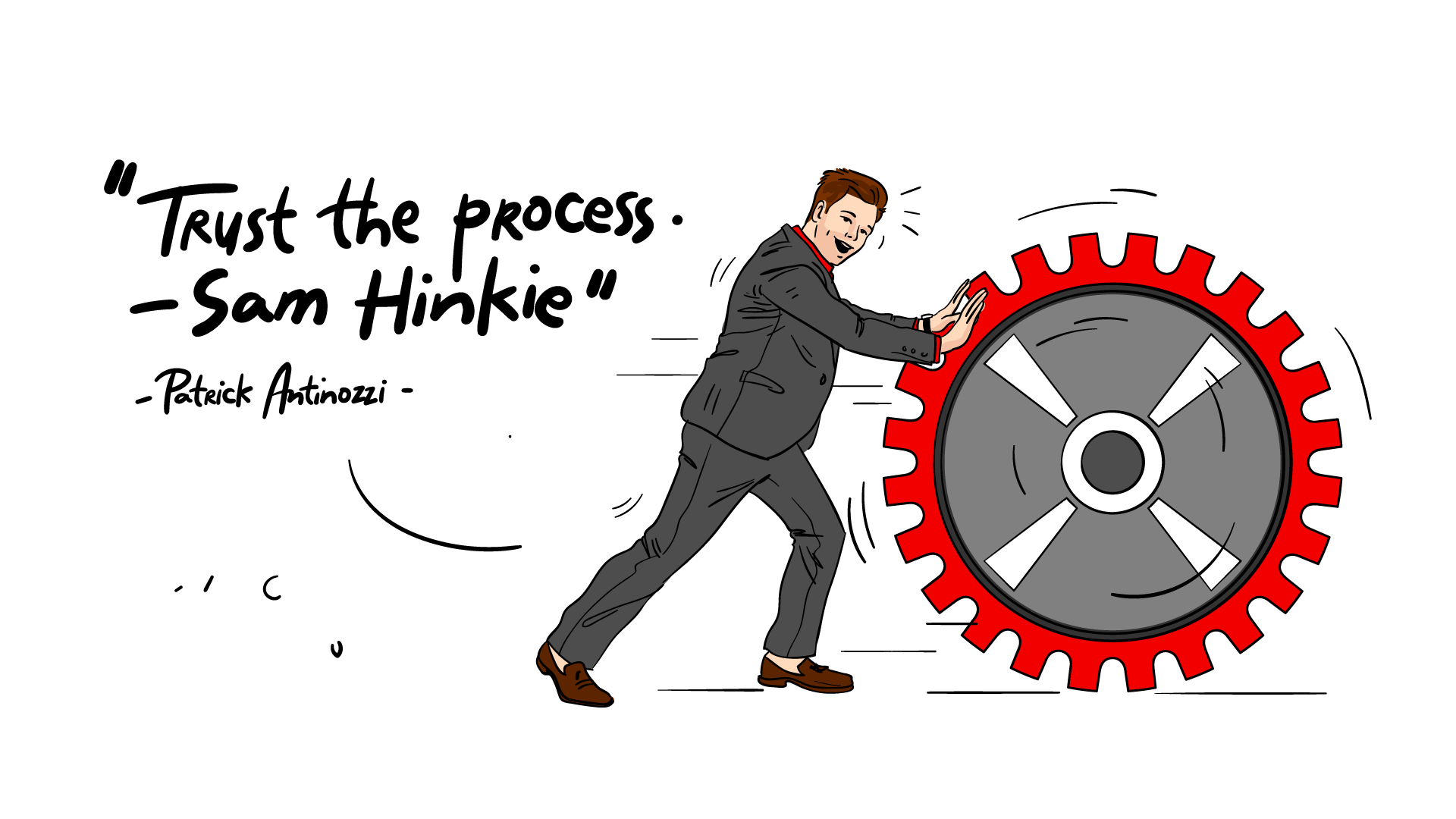I’m not even joking when I say that, out of all of the questions I receive about running a web design business, about 70% center around the “web design process”.
In other words, people are looking for a step-by-step blueprint to follow with each of their web design clients. From capturing the lead to publishing the site.
I debated back and forth on whether it was a good idea to provide this.
On the one hand, I feel like people should develop their own web design process that makes the most sense for them and their clients. While there is certainly nothing wrong with being inspired by others’ work, and even copying certain aspects of it, merely copying and pasting every single element of someone else’s business will do you and your clients a big disservice.
But, on the other hand, this is a question that frequently pops up in my comments, emails, and over at Launchers.
The people demand it!
And I’ve never been one to let the people down.

I’m going to give you the web design process that I personally follow with each of my clients. It is by no means the definitive process for all web designers, and I’m sure there are many out there who would disagree with me.
But it works for me. And it helped me scale RapidWebLaunch into a successful web design agency.
Let’s get started!
1) Lead generation

What’s the biggest and most frustrating challenge for aspiring web designers everywhere?
You already know what it is.
Say it with me:
Getting. Clients.
When it comes to getting web design clients, there are two categories:
Inbound
Inbound leads simply come to you without you having to aggressively chase them down.
“WHAT?? What is this sorcery?? I want leads to magically come to me too!” – You, probably
Not so fast cowboy. I never said it didn’t take any work. The work is just distributed differently.
Inbound web design leads generally come from one of these places:
- Referrals
- YouTube
- Social media
Referrals
As you satisfy one client after another, you’ll begin to see a “snowball effect”.
Happy customers tell other people about your services, who then reach out to you to get you to do work for them.
Referrals are crucial to building a successful web design business. Always make sure your clients are blown away by how great you are.
As a web designer, Google is your #1 fri-
You know what? I’m sorry. But it’s just too cliche. Google is not your #1 friend. Google is your hot date.
Take Google out to the trendy winery just outside of town, share a nice bottle of merlot and a few tapas while being serenaded by the local Ed Sheeran wannabe. Talk about Google’s family and upbringing and be continuously interrupted as you try to talk about yours. (since Google already knows everything about you) Finish the evening with a glowing candlelit dinner and rom-com viewing at the local drive-in. And don’t cheap out on the flowers and chocolate either.
Creepy? Yah. Accurate? Absolutely.
The key to getting high quality and qualified inbound leads lies with Google. People who are searching for web design services are already interested in buying. They’re just searching for the right designer for them.
How do you get your web design services to rank at the top of Google when there is so much competition already?
Content my friends. It’s all about the blogging.
Putting out consistent, high quality blog posts is exactly how I built RapidWebLaunch from nothing. If I didn’t get heavily into blogging, I would not be where I am today.
Make no mistake. This takes a lot of work. And it is most definitely a long term game. There are no shortcuts here.
But when you finally get your site to start ranking on the first page of Google, the leads will start pouring in.
However, blogging wasn’t the only important piece of my content marketing strategy…
YouTube
I also made YouTube videos.
In fact, I ended up creating a content marketing strategy that involves making a video for every single blog post that I write.
All of my YouTube videos contain a call to action that funnels people to my site. The type of CTA I use depends on the subject of the video.
YouTube is the world’s second largest search engine. And it is owned by the world’s #1 search engine.
If you’re still not using YouTube to market your web design business, you’re quickly falling behind. It’s already difficult to get people’s attention on there. Imagine what it will look like 5 years from now.
Social media
I hate social media. I really do. I think it damages our lives more than it enriches them.
Depending on how you use social media, you could argue that it is actually a tool used for outbound leads, rather than inbound. And since I prefer building inbound leads to outbound, it gives me all the more reason not to use it as a sales tool.
But I do recognize that it can be a useful tool for producing and sharing content that drives traffic to your site and generates leads.
I found Twitter to be the most effective social media platform for this. It is by far the most customizable and open-ended of all the platforms.
These days, I only use Linkedin and Pinterest. (unless you count YouTube, of course)
Outbound
Generating outbound leads takes a special kind of person. It is hard work.
Specifically, you need to have a near obsession with all things sales.
Outbound leads can come from:
- Cold calling
- Cold emailing
- Cold DMing
- Cold meetups and conferences
Is it just me or did it get a little chilly in here?
“Cold” simply refers to the fact that your lead has had zero interaction with you or your brand. As such, they’re gonna need some warming up.
Most of this comes from straight up hustling. Like, keeping-a-spreadsheet-of-thousands-of-businesses-and-tracking-all-of-your-phone-calls-and-emails-and-messages kind of hustle.
Then you’ve got to follow up with them for weeks, months and sometimes even years.
Warming a cold lead is about as salesy as you can get. If you don’t like sales, I’d suggest you either learn to love it, or invest heavily in the inbound marketing strategies we mentioned above.
No matter what, you will have to get involved in sales in some form. But it’s much easier when you’ve already warmed the lead up with a blog post or YouTube video.
2) Sell yourself

Ohmygosh! A new lead just came in from your website!
Now what?
Now it’s time to put that sales cap on buddy.
And believe it or not, you’re not selling web design services. You’re selling yourself. The web design services comes secondary to that.
And that’s because there are tons of web designers to choose from out there. But there’s only one you.
It’s time to tell your story.
People buy from people. Having fantastic web design skills is great and all, but if you have zero differentiating qualities, why should they choose you?
A few years ago, two researchers created SignificantObjects.com to test the value of storytelling. They purchased random, insignificant knick-knacks for $1.50 each, added some compelling stories to them, then turned around and sold them on eBay.
In total, they spent $128.74 on this investment. Do you know how much they sold these items for?
$3,612.51
THAT is the power of storytelling. And why you need to get really good at it.
Don’t be afraid to be a little different. Even if it sometimes means an uncomfortable amount of transparency.
3) Sign the client

After gettin’ all salesy and storytelly with your lead, they’ve decided they like you, you’ve decided they are a good fit for you, and you’re both ready to move forward. Awesome!
Now you need to decide whether or not you’re going to have your client sign a contract.
If you choose not to have a written contract signed by both parties, you should at least clearly define the terms and scope of the arrangement via email. So you have a written understanding of both sides’ commitments.
4) Get paid

Cash time!
Before you do any work, you need to receive a deposit. Most web designers, including myself, do a 50/50 split of the invoice. 50% deposit up front, then the remaining 50% when the site is ready to launch.
I require all of my clients to pay via credit card. No wire transfer, no emails, no debit. Just credit cards.
Credit cards are commonly used by everyone in North America, and offer protection for both myself and the client. This is especially helpful if they’re still nervous about working with someone they’ve never met.
Here are a couple of tools I use for invoicing and expense tracking:
FreshBooks
FreshBooks has been with me since the beginning. It has been my favorite invoicing platform for years.
It’s perfect for those who have less than 50 clients. But after that, it just gets too expensive. Once I topped 50+ clients a couple of years ago, they raised the price on me to $70/month. That’s just way too much for invoicing and expense tracking.
That’s when I switched to my new favorite invoicing platform…
Invoice Ninja
Invoice Ninja is loaded with tons of features. It has everything FreshBooks has and more. And, at just $90/year, is extremely affordable.
It’s not nearly as polished and user-friendly as FreshBooks, so it will take some time to get the hang of it. But if your web design business is growing fast, it’s a better choice.
They also have a completely free version. So you can give it a try before investing in the Pro version.
5) Receive content from client
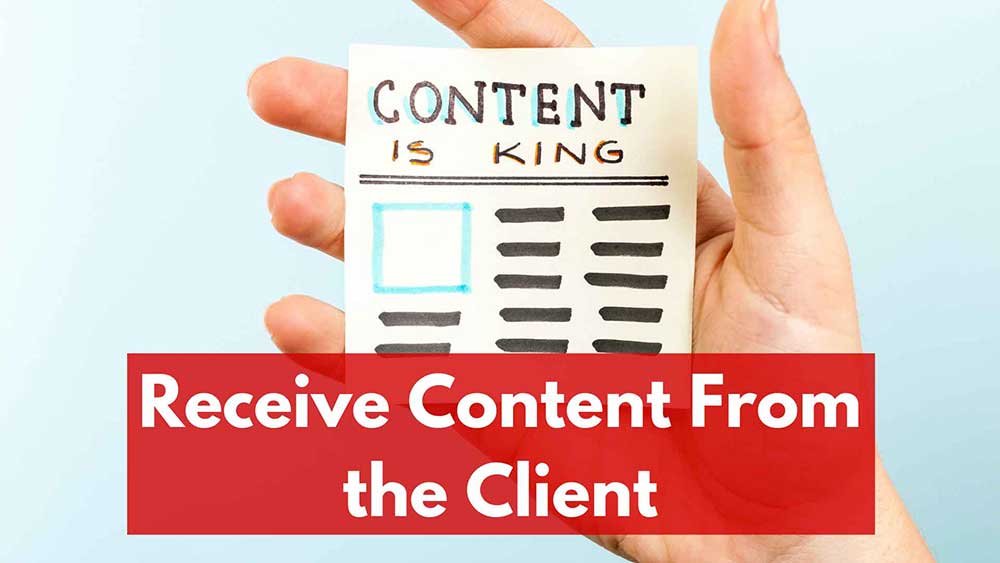
Once you receive the deposit from the client, get them to send you any and all content pertaining to the website.
This includes:
- Logo
- Brand guide
- Images
- Word copy
- Videos
- Social media links
To facilitate the transfer of content, I like to use one of two things:
If they don’t have a ton of content, keep it simple and have them send it to you via email.
Dropbox
If they have a lot of images and videos, sending over email won’t be ideal. Have them create a DropBox folder and send you access via a link.
6) Setup the site
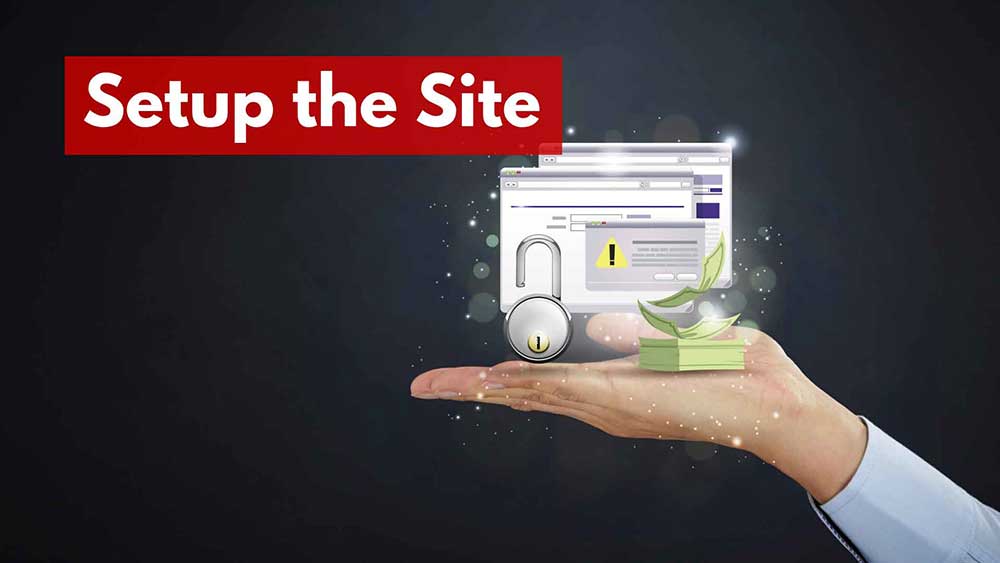
So this is where things can get tricky. How you setup your client’s website really depends on the relationship between you and your client.
Non-WordPress users
If you’re using a website builder like Weebly, Squarespace or Shopify, then this will be very straightforward. Most of these site builders have their own special designer version of their platform. Just follow their instructions.
WordPress users
If you’re like the vast majority of web designers, and you’re using WordPress to build your clients’ websites, then you’ve got a variety of options.
Hosting the client’s site
If you’re smart, and you’re providing hosting services to all of your clients, you’ll have your own servers leased with a company like BigScoots, Cloudways or Liquid Web. (or at least some space off of a shared server)
Then, it’s as simple as creating a new WordPress installation on your server for each new client. (the steps for this will depend on the host you use, and you should get in touch with them to find out more)
This is where the live site will be hosted on your IP address until it’s ready to launch and point a domain to.
It will look something like this: http://22.26.182.14/
Not hosting the client’s site
If your client prefers not to host their website with you, and will use their own hosting solution, then you just need to ask your client for the logins to their domain registrar and hosting company.
7) Make the first draft of the home page
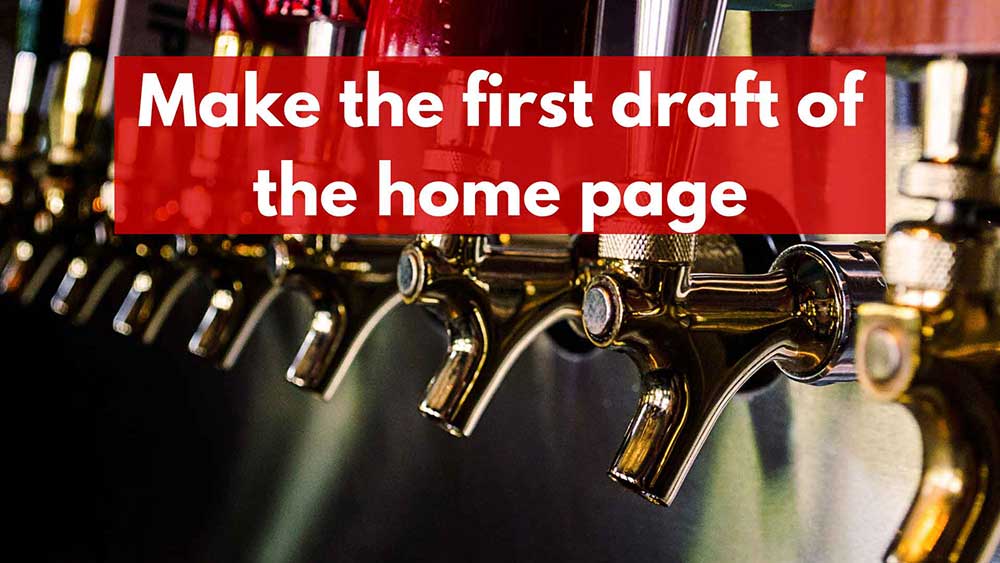
You’ve got all the content you need, you’ve setup the new site with your website builder of choice, now it’s finally time to start building websites!
I like to do a full first draft of the home page first. This gives the client a clear idea of the look and feel that I’m going for.
Keep in mind everything you’ve learned about web design and get to work!
8) Get feedback, make changes
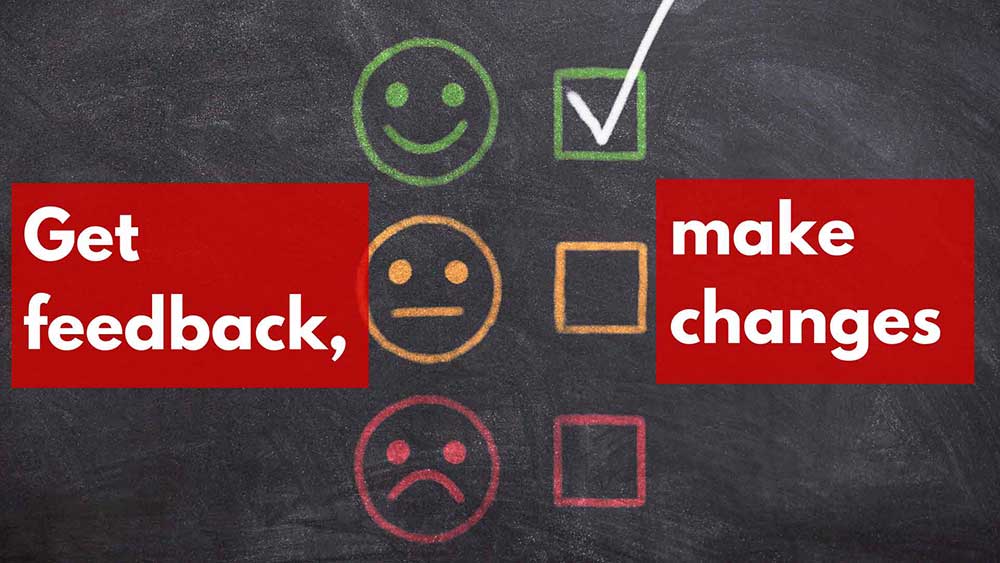
Once the home page is done, send the link over to your client, and ask for feedback.
If they’re not crazy about it, ask them for specifics on what they don’t like about it. Try to dig deeper if they’re giving a lot of subjective answers like:
- “It’s not as minimal as I would like.”
- “I want it to be more professional.”
- “Can you add more flair?”
Good communication is key here. Your clients will often have an idea of what they want their site to look like, but find it difficult to express that into words.
Or even worse, they won’t have any idea of what they want, but will have a lot of feelings about what they like and don’t like it.
Be patient. And slowly draw these ideas out like water from a well.
If they love the first draft, and don’t have much negative feedback, you can then continue building the rest of the site in the same style.
9) Continue building the rest of the site
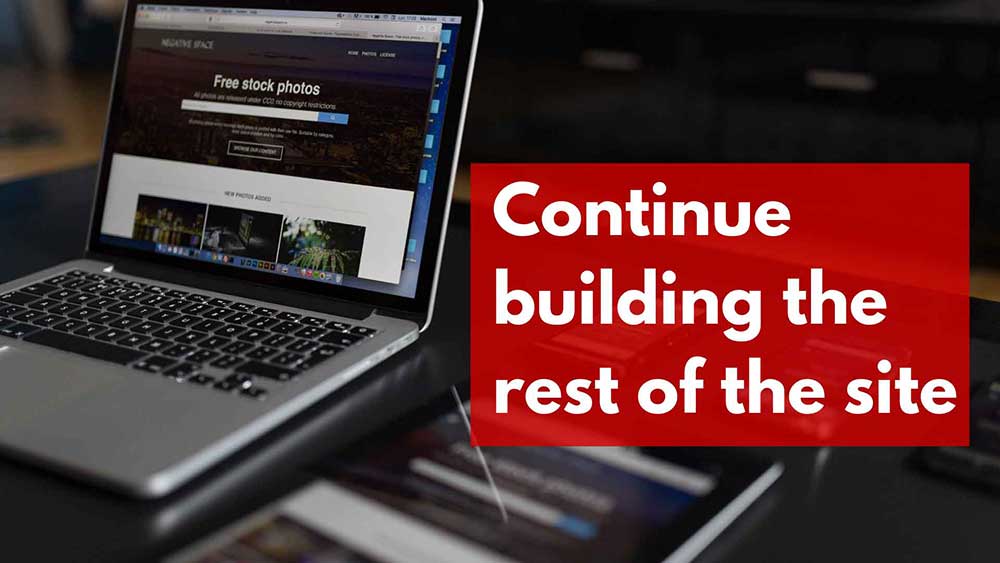
Once you have a clear understanding of what the client wants the site to look like, and they’ve reached the point where they love the look of the home page, you can continue building the rest of the pages.
While you’re building away, always focus on these two primary objectives:
1) User experience
User experience is by far the most important aspect of great web design. Always prioritize UX over anything else.
2) Responsiveness
The second crucial aspect of great web design is responsiveness. In other words, ensuring that the user experience is awesome on any device. Especially mobile.
10) Get more feedback, make more changes
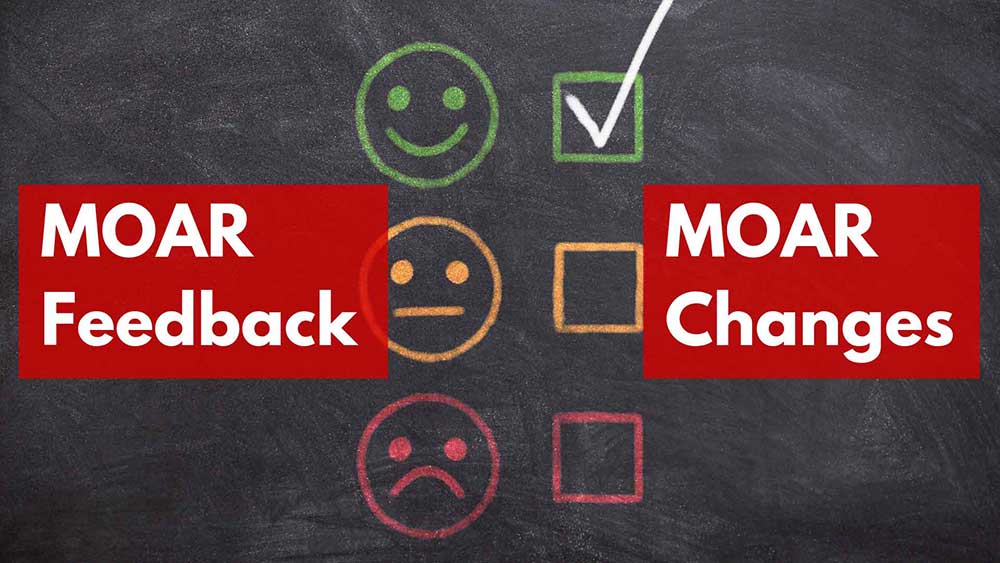
As you complete each page, follow the same process of steps #7 and #8. Continue to do so until all of the pages of the website have been fully designed.
Because once the design is done, it’s time do some of the gritty backend work…
11) Work on the backend

Great web design involves a lot more than just pretty layouts, graphics, transitions and animations. This frontend work is the fun part.
But the backend work is equally as important. Think of it as the skeleton of a beautiful website.
Here are some important things to consider when working on the backend of your client’s website:
Keyword optimization
You can have the most beautiful site in the worldwide web but, if no one sees it, what’s the point?
Doing proper keyword research, and integrating them into each page of the website, is the first step of SEO. Things like headings, meta tags and descriptions, and image alt tags should be optimized for your target keywords.
But keep in mind that you should never simply stuff your target keyword into your page as much as you can. Google is too smart for that.
The look, feel and flow of your messaging should be natural. Always look at it from a human perspective.
Would you want to read it?
Site structure and internal linking
Having a clear site structure makes it easier for Google to crawl your site and get a better idea of what it’s all about. And linking from one page to another is an important aspect of that.
A good site structure could look something like:
- Home
- Services
- Podcast Production
- Podcast Editing
- Podcast Consulting
- Blog
- Categories
- Interviewing Guests
- Audio Quality
- Editing
- Production
- Marketing and Outreach
- Categories
- Contact
You can get a clear picture of what this site offers just from the navigation structure.
Then, internally linking from one page to another can help funnel your leads down the path you want them to take.
For example, you could link a blog post about the 8 Most Important Podcast Editing Tips to a call to action that brings your reader to your Podcast Editing services page.
Performance
Performance and site speed is becoming ever more important, and competitive…
Both Google and Facebook have shown this by building their own version of a super-fast platform that allows website’s to load within just a couple of seconds. (AMP and Instant Article, respectively)
Ensuring your website can load quickly, and doesn’t lag with bloated features, can make the difference between someone becoming a client or going to your competitor instead.
12) Get paid again

You’ve done it! The site is complete and ready to launch.
But hang on just a second there sport. You need to get that other 50% paid first, remember?
Resend the invoice and have your client pay the remaining 50%. Again, ideally with a credit card.
13) Publish the site
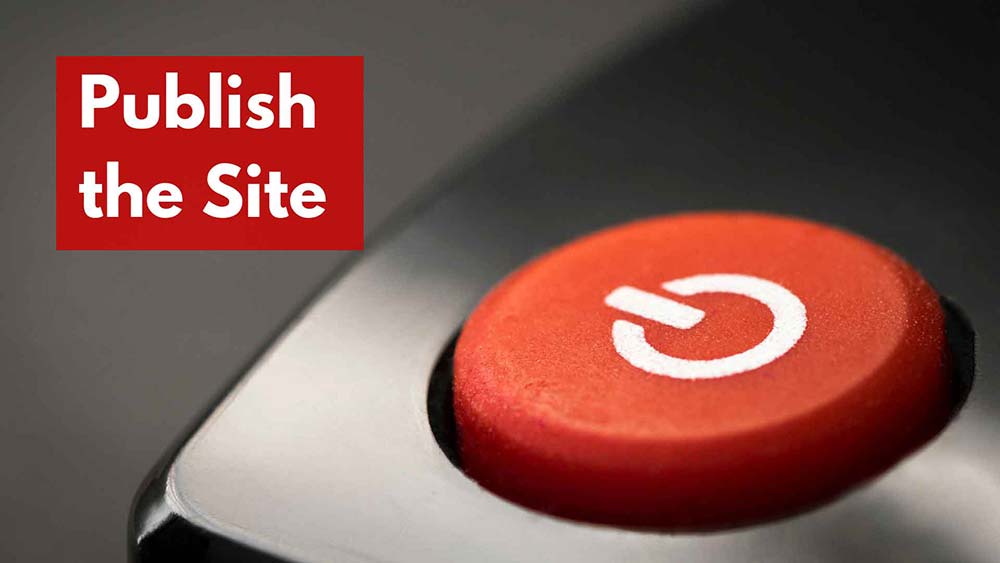
Finally, it’s time to launch your client’s website!
Again, how you proceed depends on the unique needs of your client.
Register a domain
If they don’t already own a domain, you will need to have them purchase one, or do so on their behalf.
I recommend my clients use Namecheap. They’re among the cheapest out there, and their customer service is better than companies like GoDaddy or Bluehost.
If they buy the domain themselves, they will need to send you access to their account so you can modify their DNS settings.
Point the domain
Now that you have the domain registered, you will need to point the domain to the server where the site is hosted.
This involves changing the DNS settings.
DNS stands for Domain Name System. DNS is how domain names are pointed to IP addresses. (remember this thing? http://22.26.182.14/)
DNS also controls email delivery, and is what allows you to use your web browser to find web sites as well as send and receive email.
Find out what IP address your server is located under, then point your client’s DNS to that IP.
14) Testing and Quality Assurance

Oh, I’m sorry. Did you think you were done?
Once a site is launched, you are guaranteed to come across at least a handful of glitches or errors. You can’t plan ahead for everything.
Things like…
Broken links
A broken link is a link that doesn’t lead anywhere. It just takes you to an empty 404 page. A 404 code tells Google that page doesn’t exist and to not include that link in their search results.
Make sure all of the links on your client’s site actually work.
Opt-ins and forms
Ever submitted your info into a website’s contact form and nothing happens?
There are a number of reasons why contact forms can break. Test every single one to ensure they actually do what they’re supposed to. Usually, this is as simple as emailing the info to your client.
Performance
Test the website in performance trackers like GTMetrix to confirm they are running blazingly fast. If it pulls up errors or suggestions on how to improve, implement them.
You don’t have to be ranked A+ for everything, but your pages should definitely not take more than a few seconds to load.
Responsiveness
That fancy animated video in the above the fold section of the home page looks sick on desktop. But did you check it out on your iPhone? Turns out, you can’t even see the bottom half of it.
Responsive web design can be tricky.
Mobile is already the most common way people now access the internet. And it is continuing to grow every year.
And now there’s an even larger variety of phone sizes to work with, making responsive design even more challenging if not done right.
Test the big 2: Mobile and desktop. If you’re really picky, you can check the tablet version as well.
15) Get paid yet AGAIN…and again…and again… (if you’re doing it right)
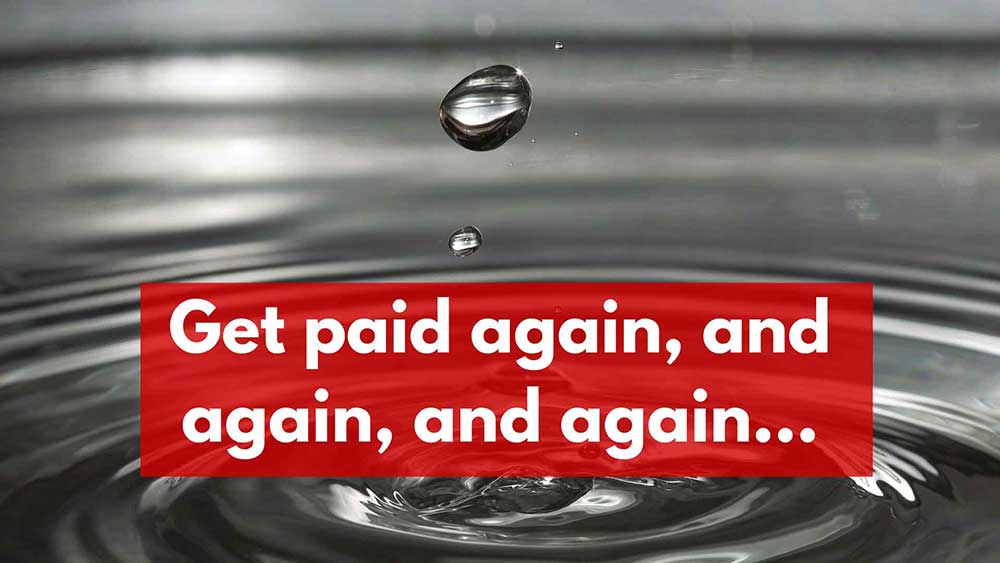
Lookatchu gettin’ paid for a 3rd time! I think you’re starting to get the hang of this.
If you’ve done this process correctly, you should be hosting your client’s website once it’s published. What features you offer and how much you charge is up to you.
Why give away that monthly passive income to some other web hosting company?
Stripe
I use Stripe to facilitate all of my hosting subscriptions.
Once the site is published, and I have the credit card info from my client, I setup the subscription with Stripe. It will then automatically charge my client’s credit card monthly.
There are a number of services that offer this feature, but I’ve found Stripe to be the best for me.
However, Stripe is not available in every country. So you will need to check for yourself and see what alternatives are available if it’s not.
Conclusion
Welp, this article should serve as a nice little web design checklist for your web design process.
While it may not be an exact fit for you and your business, it should give you an overall view of what it takes to bring someone from lead to paid client.
This is not the process I used when I first started my web design business. Trust me, you could barely even call what I used a process.
But as my business grew and my knowledge and skills improved, my web design process was gradually sharpened and refined.
I’m continuing to do that to this day. #neverstopgrowing
If I’ve missed anything, or you still have some questions, shoot me a comment below. I’ll update the post with your question. (and maybe even give you a little shoutout)

